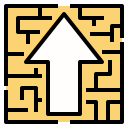Master BIM and Parametric Thinking
Focus on model intent, not just tools. Build clean templates, naming conventions, and view standards that reduce rework. When Amir rebuilt his template, coordination clashes dropped dramatically. Post your top template tip, and we’ll compile a community checklist you can download.
Master BIM and Parametric Thinking
Learn to express design relationships as rules. Start with simple dependencies—panel spacing, daylight thresholds, structural grids—then iterate. A small script that saves ten minutes daily becomes hours monthly. Share a screenshot of your first graph and the problem it solves for your studio.







